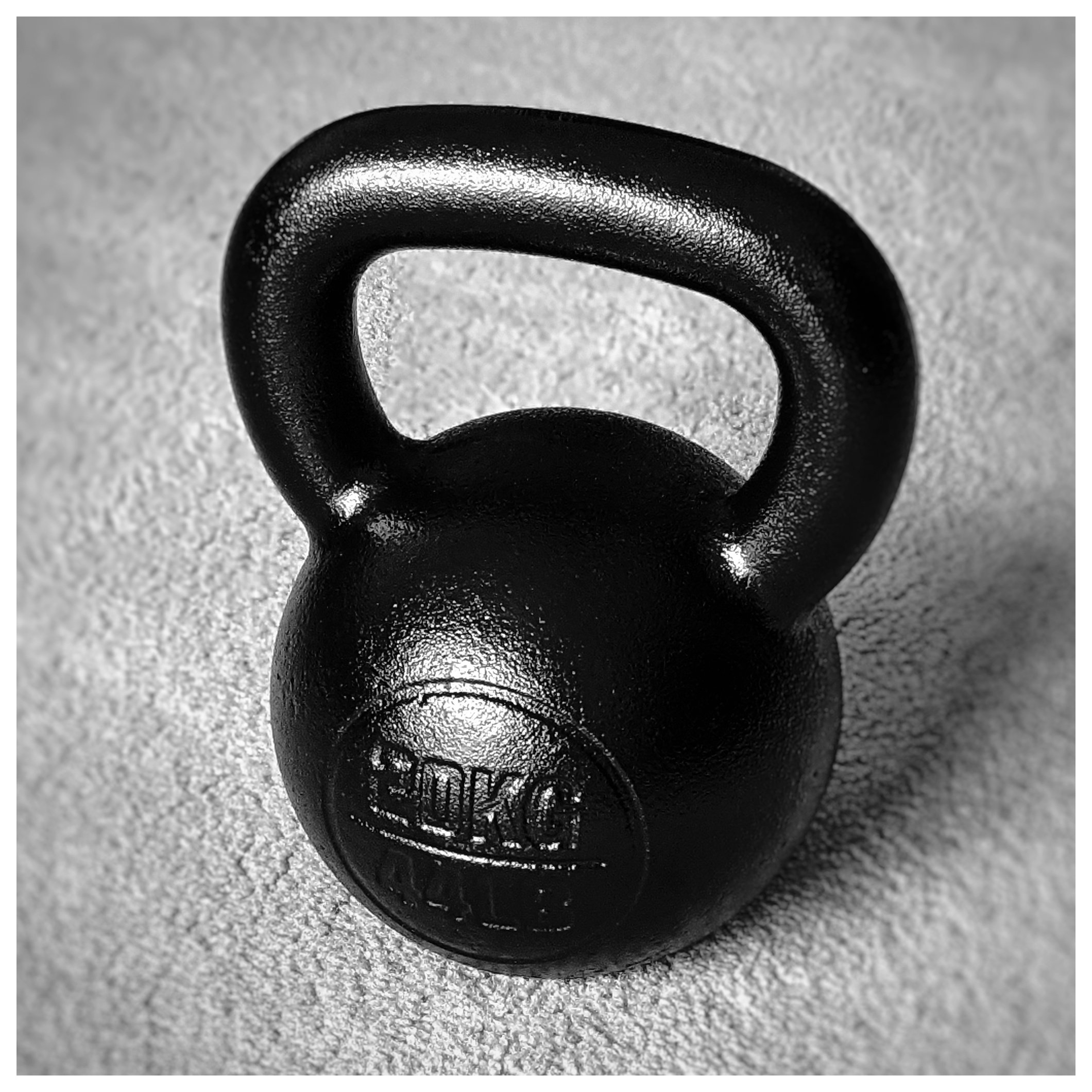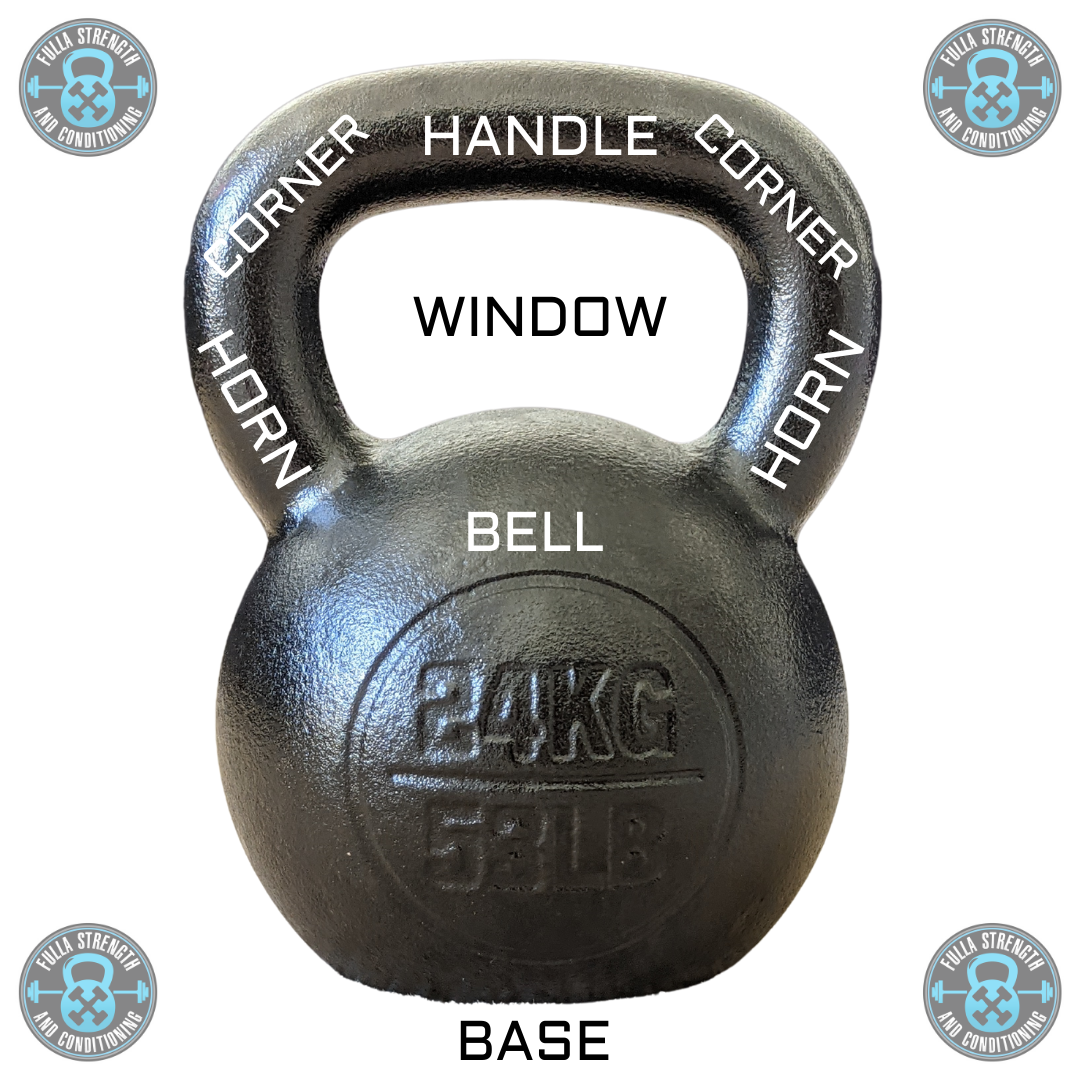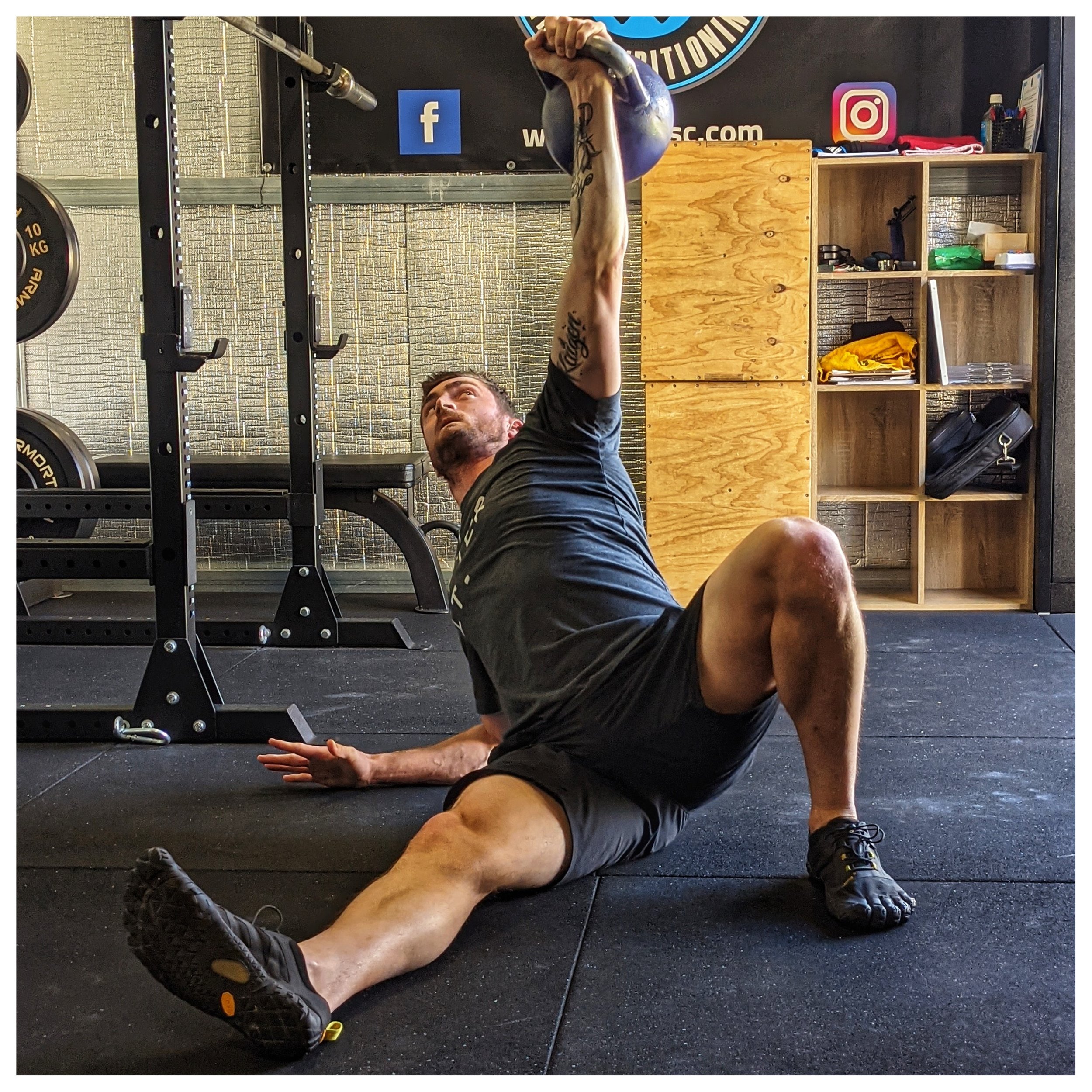What Is A Kettlebell?
Unfamiliar With Kettlebells, Or Never Used Them Before? No Problem!
Let me teach you a bit about them.
This article will serve to teach you all you need to know about the mighty kettlebell.
What they are, what they look like, the two main types of kettlebells, and what they’re good for.
In the last twenty years or so, the kettlebell has gained mainstream popularity, and for good reason — it works.
While new fads come and go in the fitness industry, the kettlebell is here to stay.
It’s actually been around for a lot longer than you might think, too. It’s just that it’s relatively new and more accessible to the masses/general population.
I’d like to help educate you on all that is great about kettlebell training.
Without further delay, let’s get started!
What Is A Kettlebell?
These ancient strength tools, which are made out of cast iron or steel — while now modernised — date back hundreds of years.
They are designed for function, not fashion. To get maximum results in minimum time.
Kettlebell training has helped the military, elite teams, top-level powerlifters, world-class athletes, and everyday men and women build their strength.
“The kettlebell is an ancient Russian weapon against weakness.”
— Pavel Tsatsouline
They aren’t (typically) bright, colourful, fluffy pieces of equipment to be looked at or admired (although some of them do look damn sexy).
Kettlebells are designed to be picked up, used with a purpose to assist you in becoming a physically better human being.
But, they aren’t designed to be used as a dumbbell or barbell.
You don’t use them for bicep curls or lateral raises. Don’t believe what you see ‘on the gram’ or in those catchy clips.
Choose a different tool if you have it for those exercises. You’ll get more out of them.
Instead, use kettlebells for what they’re designed — swings, get-ups, squats, cleans, presses and snatches.
What Does A Kettlebell Look Like?
This unique strength training tool — which looks a bit like a cannonball with a handle on top — is the ultimate handheld gym.
A lot of people don’t know the different aspects that make up a kettlebell. Below is a picture of the kettlebell and its ‘parts’.
This is the anatomy of a kettlebell.
“Kettlebells are compact, inexpensive, virtually indestructible, and can be used anywhere. The unique nature of kettlebell lifts provides a powerful training effect with a relatively light weight, and you can replace an entire gym with a couple of kettlebells.”
― Pavel Tsatsouline
When you learn these powerful exercises, develop the necessary skills, and perform Kettlebell Training in Perth regularly, you will unlock your full physical potential.
While they may not look like much, kettlebells are uncompromising in what they can do for your body.
If weakness is the problem, kettlebells are the solution.
It replaces numerous pieces of gym equipment and simplifies strength training down to the bare essentials.
What Are The Different Types Of Kettlebells?
While there are many different brands, styles, coatings, and colours of kettlebells, there are two styles or ‘types’.
They are ‘Classic’ and ‘Pro Grade’.
The main differences between the two are the dimensions.
Classic kettlebells get larger in size, shape, and handle width as the weight goes up. This means a 4kg classic bell is significantly smaller than say a 24, 32, or 58kg.
Whereas Pro Grade kettlebells all have the same dimensions, no matter the weight (going all the way up to 48kg).
The bell size, handle width, and dimensions are the same — uniform.
A 6kg bell has identical dimensions, and looks exactly the same as a 40kg, even though one is significantly heavier than the other.
Pro Grade Kettlebells are used in Girevoy Sport (GS), the sport of kettlebell lifting. This allows competitors to use the same size tool, regardless of weight.
This can make learning new exercises, or going up in weight an easier transition.
Which Type Of Kettlebell Is Better?
Well, it depends.
In my experience, ladies, especially with smaller frames and leverages find using classic bells more comfortable, as it sits more comfortably in the rack position, between the forearm and bicep (pictured).
I own, practice with, and have used both styles. And I like them both, for different reasons.
In my Kettlebell Training in Perth coaching that I offer, I have some students who are better suited to the smaller, classic bells. And I have some who prefer and perform better with Pro Grade.
It really comes down to your level of experience, pain tolerance, body structure, and what feels most comfortable.
As with anything, it requires some practice to find what is the best fit for YOU. This might require some trial and error on your part.
What Are Kettlebells Good For?
In a sentence: making you a better human.
Whether your goal is to get stronger, build muscle, improve your fitness, or lose body-fat — the kettlebell can help you achieve it.
when used properly, The kettlebell can do it all!
Swinging a kettlebell is great for fat loss due to its high-calorie expenditure and the ballistic nature of the lift.
Hardstyle swings are very inefficient when it comes to using energy. This is GREAT for fat loss when the goal is to expend the MOST amount of energy, not the least.
Heavy presses can build tremendous strength and muscle gains, primarily because the weight is heavy, and the volume high.
Then you have the Turkish Get-Up (pictured). This lift builds great athleticism, overall mobility, and shoulder stability on account of the lengthy time under tension per repetition.
Kettlebells Are Like A Swiss Army Knife.
One tool that has everything you need within it to get the job done.
Kettlebells are a tool that requires you to put in the reps, receive proper instruction, and have the patience to correctly learn the lifts.
The exercises aren’t a simple as say, a bicep curl. But they develop so many physical qualities it’s hard not to get excited about the prospect of all the results on offer.
It also weeds out the impatient lifter who won’t commit to the process, and whose sole goal is to smash themselves and feel sweaty.
While there are six main exercises we use in kettlebell training (along with their variations), the best results are reaped upon mastery of them.
“An inch wide, but a mile deep.”
Meaning, we don’t look for more exercises, but rather, aim to get more out of each repetition and every exercise performed.
It’s not about doing more (stuff), it’s about doing it better.
No matter if you’re a beginner or an advanced lifter, you can always learn something new and improve upon your current technique.
Where To From Here?
If you’ve read this far, and are excited to start (or continue) your kettlebell journey, my advice to you is simple. Seek out a certified SFG 1 Instructor from StrongFirst and receive a lesson (or a few) for hands-on instruction to learn the key lifts.
StrongFirst is the school of strength and the gold standard in kettlebell instruction worldwide.
If you live in Western Australia and want some help with Expert Kettlebell Coaching in Perth , I’d love to help.
Get in touch. I’d love to assist!
Don’t Live In Perth?
Head to the StrongFirst directory to find an SFG in your area.
That way, once you have a grasp on the movements and you can execute them with precision, you’ll get much more out of your training — and look after your body at the same time.
When you have a cast iron or bell of steel flying through the air, you want to know that what you’re doing is right. Safety first.
Once you have the major movements down and you can demonstrate proficiency in them, you’ll be ready for the long and enjoyable journey ahead.
All that will be left is to set yourself a meaningful goal, have a suitable program to follow, grab a set of bells and get to it.
I hope that helps explain kettlebells and gives you a platform to get started on, or continue down, your kettlebell journey.







